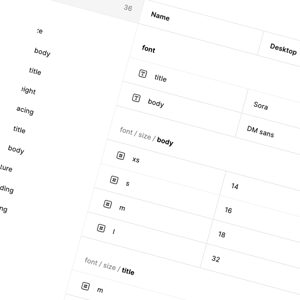The perception of artificial intelligence in business is changing. In just a couple of years, it has gone from a nice-to-have bonus to an absolute must-have – something that can make the difference between success and failure in today's market.
So how do you make sure you're on the right side of the AI line? How do you implement AI digital transformation in 2025?
The role of AI in modern digital initiatives
As businesses have targeted transformation in recent years, artificial intelligence has undergone a transformation of its own. The days of deploying AI within basic chatbots and simple content generation are coming to an end – instead, smart technology has become the driving force of digital operations.
A report from the World Economic Forum suggested that 40% of businesses were using generative AI in decision-making back in 2023, and 75% of CEOs believed this technology was going to be a key strategic differentiator in the coming years.
On the consumer side of things, AI is becoming a vital customer service asset. Service bots provide 4% to 8% increases in revenue growth, while more than 70% of consumers believe AI improves their experience.
AI is rapidly becoming embedded into almost all aspects of business operations. It's this ubiquity that is making AI fundamental to transformation in 2025.
The goals of your AI strategy
Your AI digital transformation project can provide you with a range of different advantages. However, to get the best from the project, you'll need to prioritise your goals.
These goals should align with your broader company mission and identity. For instance, you may want to improve customer service, in line with your mission to offer the best experience for consumers. Alternatively, your organisation may be known for its innovative approaches, so you may aim for new and exciting products and services.
Potential goals include:
- Enhanced consumer engagement through elevated experiences and improved customer service
- Reduced operational costs with precise processes and streamlined practices
- Improved product innovation, leveraging the latest technological developments
- Optimised operational agility, drawing on real-time data to achieve effective decision-making
Key AI digital transformation challenges for 2025
Where there are advantages, there are disadvantages too. To make sure you are reaping the full benefit of AI, you need to be able to meet its challenges head on.
- Consumer behaviour and expectation is constantly changing – One prediction for 2025 is that consumers will shift away from traditional Google searches in favour of AI-based queries. This would mark a radical shift in consumer behaviour, which businesses will need to respond to.
- Regulations are evolving – Regulation is still playing catch-up with AI technology and is evolving fast. The UK government, for example, is exploring a potential overhaul of copyright law with regard to AI, which is going to impact any businesses deploying artificial intelligence in the country.
- Technology is developing rapidly – Businesses need to stay on top of rapidly developing tech. A prediction is the merging of edge computing and cloud-based data processing, which provides opportunities but also poses challenges as organisations strive to get the best from new tech.
- Sustainability is becoming a key concern – Data from 2024 suggests that ChatGPT's power demand is equal to that of 33,000 residential properties. Reaping the benefits of AI while targeting genuine sustainability is a real challenge.
The key steps of formulating an AI roadmap
What practical moves can you make to formulate your AI roadmap? Here, we're looking at five simple steps that will ease your digital transformation process.
Audit existing capabilities
Digital transformation is not going to be a dramatic gearshift, taking you from 0-to-60 in a couple of seconds. Instead, you'll build on what you're currently using – developing what's working and changing what's not.
With this in mind, the first step is going to be an audit. Examine your existing capabilities, and understand what your main priorities for transformation are.
Understand return-on-investment data
Digital transformation costs money, which is why ROI is so important. As we've touched on above, implementing AI in customer service can accelerate growth, and CEOs believe GenAI-based decision-making can give them a competitive edge. There are certainly returns to be had here, but you need to find them.
Take another look at your audit data. Of the capabilities that are currently lacking, which is going to give you the greatest return? This should become your priority.
Define clear goals
The ROI and improved capability are both goals in and of themselves. But to be successful, your AI implementation roadmap requires clearer and better defined objectives.
Go over the goals we discussed earlier on, and decide which of these you want to target. Apply clear and concrete parameters to these. For example, perhaps you want to improve customer satisfaction by 15% across the board. Or maybe you want to bring products to market 10% faster.
Establish timelines and foster communication
It's not just your goals and KPIs you need to measure. You'll also need to keep track of the time it takes to implement your AI digital transformation strategy.
Break your implementation project down into key milestones. Define the time you expect to take to reach each milestone, and implement communication channels that keep everyone on the same page. Schedule meetings and strategy sessions at key points as and when required.
Develop pilot projects
Implementing AI digital transformation across the board, right out of the blocks, is going to be overwhelming. Instead, focus on one of your key goals and develop a pilot project based on this.
Bear in mind that your pilot project needs to be problem/solution-based. In other words, you begin with an issue that your business is currently facing and devise a way in which AI can resolve this.
Ongoing assessment and adaptation
Once your pilot project is launched – and even after you've launched subsequent AI solutions – this is not the end of the road. Digital transformation is an ongoing process, which will require continual analysis, assessment, and fine-tuning.
To make sure your AI digital transformation project remains on track, you need to be measuring and analysing your results constantly. Refer to your KPIs, and track how you are achieving these. Repeat your audit at key points after implementation – how have you improved your capability, and what challenges are you still facing?
This relates to the key aim of digital transformation – ongoing relevance. It's not enough simply to get rid of your old ways, replacing these with new ways that will quickly become outdated themselves. Instead, you're aiming to introduce an evolving and organic set of solutions, systems, and processes that will grow alongside your business and the broader market landscape.
In this sense, AI digital transformation is not a quick fix. It is a journey of discovery and evolution for your business – one that will deliver profound benefits in the long run.























